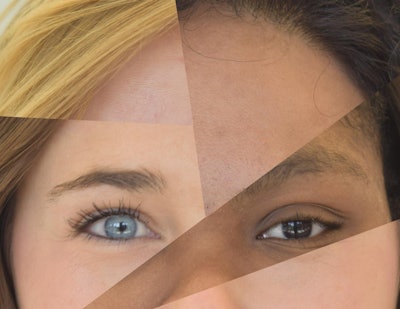 An international team, led by scientists from the School of Science at IUPUI and Erasmus MC University Medical Center Rotterdam, has developed a novel tool to accurately predict eye, hair, and skin color from human biological material. The webtool is available online without charge. (Image: Walsh lab in School of Science at IUPUI)
An international team, led by scientists from the School of Science at IUPUI and Erasmus MC University Medical Center Rotterdam, has developed a novel tool to accurately predict eye, hair, and skin color from human biological material. The webtool is available online without charge. (Image: Walsh lab in School of Science at IUPUI)
An international team, led by scientists from the School of Science at Indiana University-Purdue University Indianapolis (IUPUI) and Erasmus MC University Medical Center Rotterdam in the Netherlands, has developed a novel tool to accurately predict eye, hair, and skin color from human biological material -- even a small DNA sample -- left, for example, at a crime scene or obtained from archeological remains. This all-in-one pigmentation profile tool provides a physical description of the person in a way that has not previously been possible by generating all three pigment traits together using a freely available webtool.
The tool is designed to be used when standard forensic DNA profiling is not helpful because no reference DNA exists against which to compare the evidence sample.
The HIrisPlex-S DNA test system is capable of simultaneously predicting eye, hair, and skin color phenotypes from DNA. Users, such as law enforcement officials or anthropologists, can enter relevant data using a laboratory DNA analysis tool, and the webtool will predict the pigment profile of the DNA donor.
"We have previously provided law enforcement and anthropologists with DNA tools for eye color and for combined eye and hair color, but skin color has been more difficult," said forensic geneticist Susan Walsh from IUPUI, who co-directed the study. "Importantly, we are directly predicting actual skin color divided into five subtypes -- very pale, pale, intermediate, dark, and dark to black -- using DNA markers from the genes that determine an individual's skin coloration. This is not the same as identifying genetic ancestry. You might say it's more similar to specifying a paint color in a hardware store rather than denoting race or ethnicity.
"If anyone asks an eyewitness what they saw, the majority of time they mention hair color and skin color. What we are doing is using genetics to take an objective look at what they saw," Walsh said.
The innovative high-probability and high-accuracy complete pigmentation profile webtool is available online without charge.
The study, "HIrisPlex-S System for Eye, Hair and Skin Colour Prediction from DNA: Introduction and Forensic Developmental Validation," is published in the peer-reviewed journal Forensic Science International: Genetics.
"With our new HIrisPlex-S system, for the first time, forensic geneticists and genetic anthropologists are able to simultaneously generate eye, hair, and skin color information from a DNA sample, including DNA of the low quality and quantity often found in forensic casework and anthropological studies," said Manfred Kayser of Erasmus MC, co-leader of the study.
Walsh's forensic DNA phenotyping and predictive DNA analysis work was supported by the National Institute of Justice (grant 2014-DN-BX-K031) and IUPUI. She is an assistant professor of biology at IUPUI and a faculty member of the School of Science's Forensic and Investigative Sciences program. She is currently working with the Indiana State Police to determine how this tool can help enhance victim identification and crime-solving.
Erasmus MC University Medical Center Rotterdam is the largest university medical center in the Netherlands.